
To the place where "good design" was created
Good design, excellent design, design that opens up the future, ideas that move people's hearts, and actions that lead society always have small beginnings.
Interviews with designers at the birthplaces of good design to find hints for the next design.
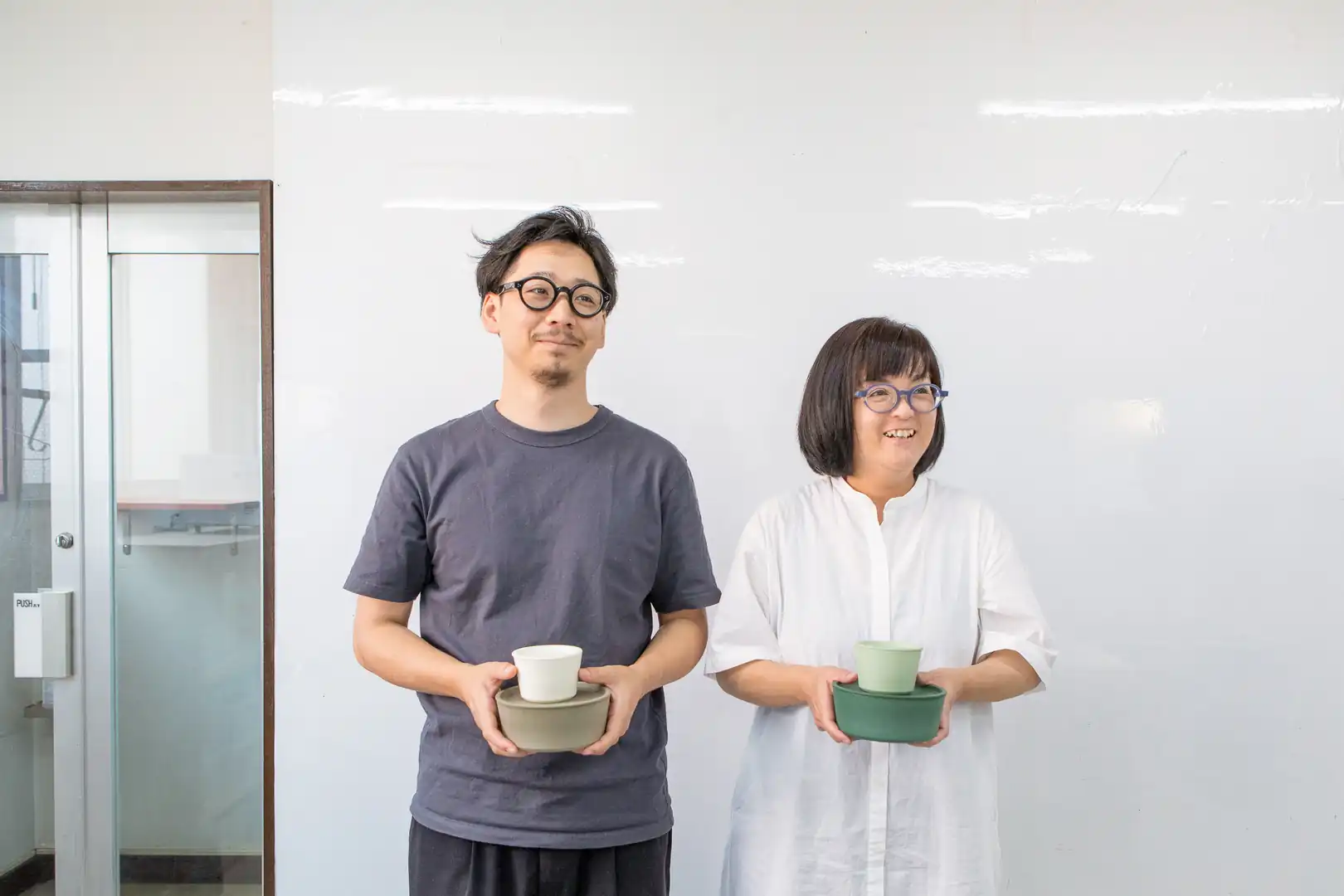
Destination
KaB DESIGN INC.
Design Expands the Potential of Resin (Part 1)
2024.10.21
“I want to raise the value of resin!” The brand “9º” (Kudo) was born from these words, part of a conversation between a designer and an engineer who met at an exhibition. These containers, which can be used for cooking, were selected for the GOOD DESIGN BEST 100 in fiscal 2018. What underpinned this project was the desire for people to continue using plastic (resin) items, which are often thrown away, for all their usable life. How was the brand built? We asked Yoshiko Saito and Mikito Ichinohe of KaB DESIGN to give us some hints about how they developed their ideas from the smallest starting point into reality, despite twists and turns along the way.

From small talk to brand launch
— The “U 90” and “U 150” containers from 9° (pronounced kudo) have three functions: cooking, mealtimes, and storage. Could you tell us how this brand was born?
Yoshiko Saito (CEO, KaB DESIGN) To begin with, we never intended to develop 9°. At an exhibition, I happened to meet an engineer from Shirouma Science in Toyama, a company which designs, molds, and decorates plastic products. We chatted together, saying things like “I want to raise the value of resin even further!” and “It would be great if we could do something, wouldn’t it?” In the process, we hit it off, and that was the start of it all.
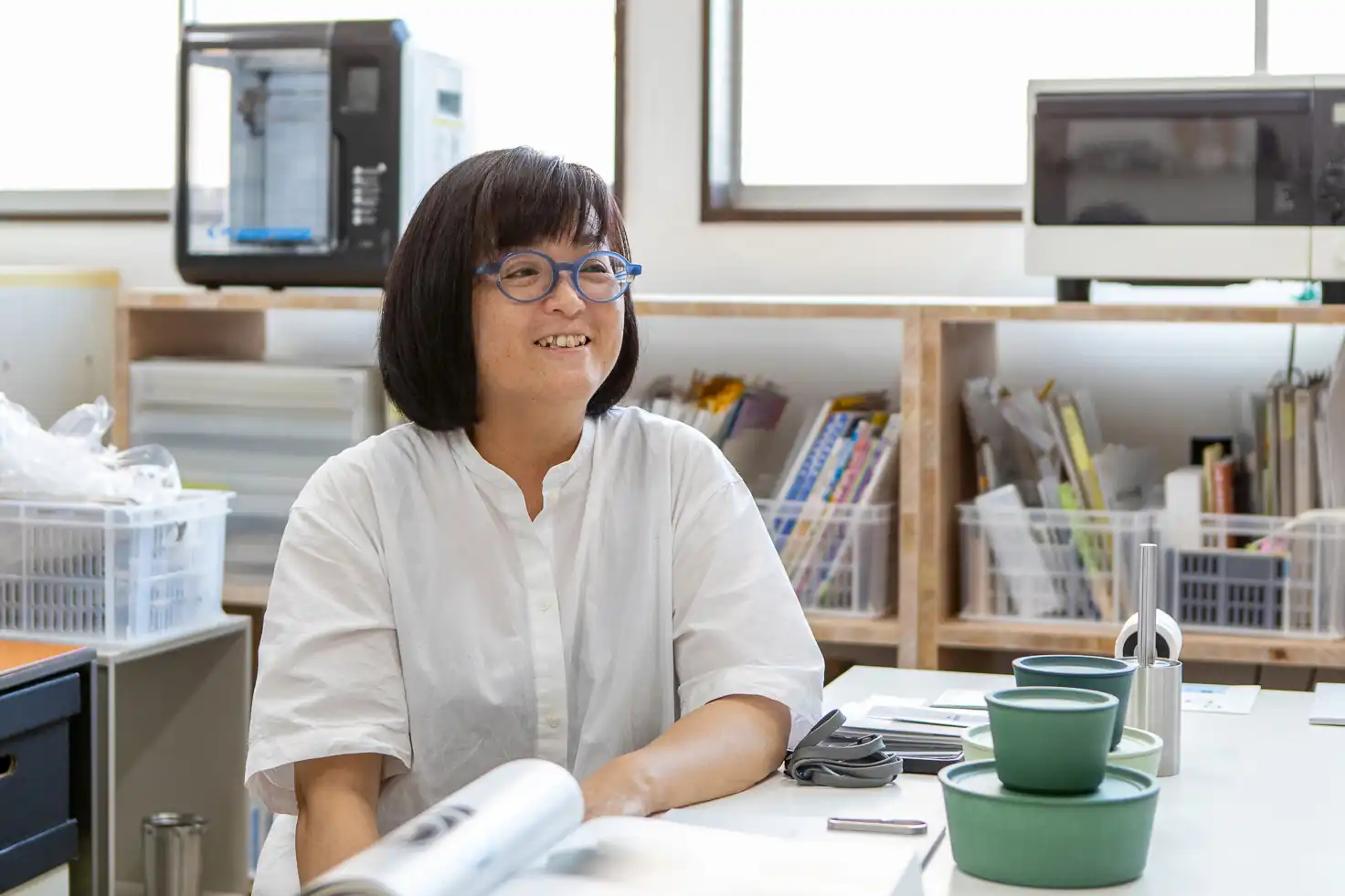
Saito Shirouma Science is a company that manufactures plastics used in containers for food, medical products, cosmetics, etc. In 2006, it was selected for a GOOD DESIGN AWARD for the cap of S&B Foods' Spices & Herbs.
The company works with major companies to make mass-produced products, but the person in charge felt a sense of crisis that this was not enough – they needed to do something new to expand the potential of resin.
— As a designer, you too had regularly wondered if plastics could have more potential, hadn’t you?
Saito Yes, I had been thinking about this for a long time, too. For example, a mayonnaise container is durable, but you throw it away when you finish using it. For a long while, I had been wondering if we could create something that could last as long as the lifetime of the material.
At the exhibition, “Spice & Herb” caps and other items were on show, and I could see that they were made with ease of use and design in mind. I could see the technical ability involved in the use of complex molds.
At that time, Shirouma Science was also handling B2C business, and I thought we could probably do something interesting with this company, so I had a chat with them about various things.
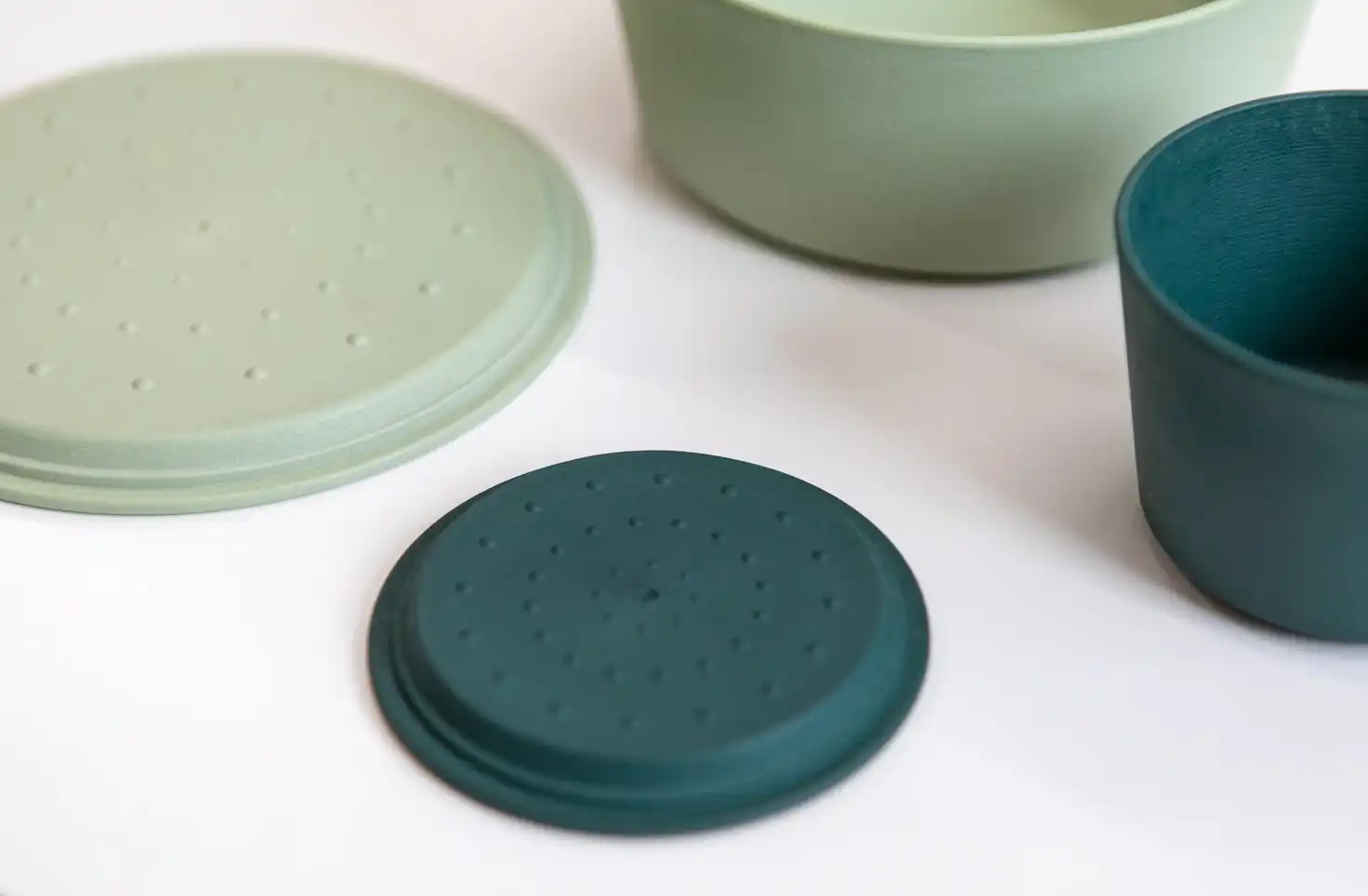
— So the brand is one which was conceived of and started by a designer and an engineer together, isn’t it? Even so, I’m surprised to hear that what prompted the creation of the brand was a chat at an exhibition.
Saito After this, I became good friends with the person in charge, and was asked to take on work for Shirouma Science, and so over two to three years, I was able to gain experience that became a solid foundation. It was perhaps a necessary period of time in order for the nature of KaB DESIGN to become known throughout the company.
It took some time, but when we finally got to know each other, talk about starting a new brand together emerged. Things moved quickly from there to making concrete plans.
Since this was a project with engineers who had long and wide-ranging experience, it didn’t take very long to create the desired image. Our communication over the previous two years probably paid off.
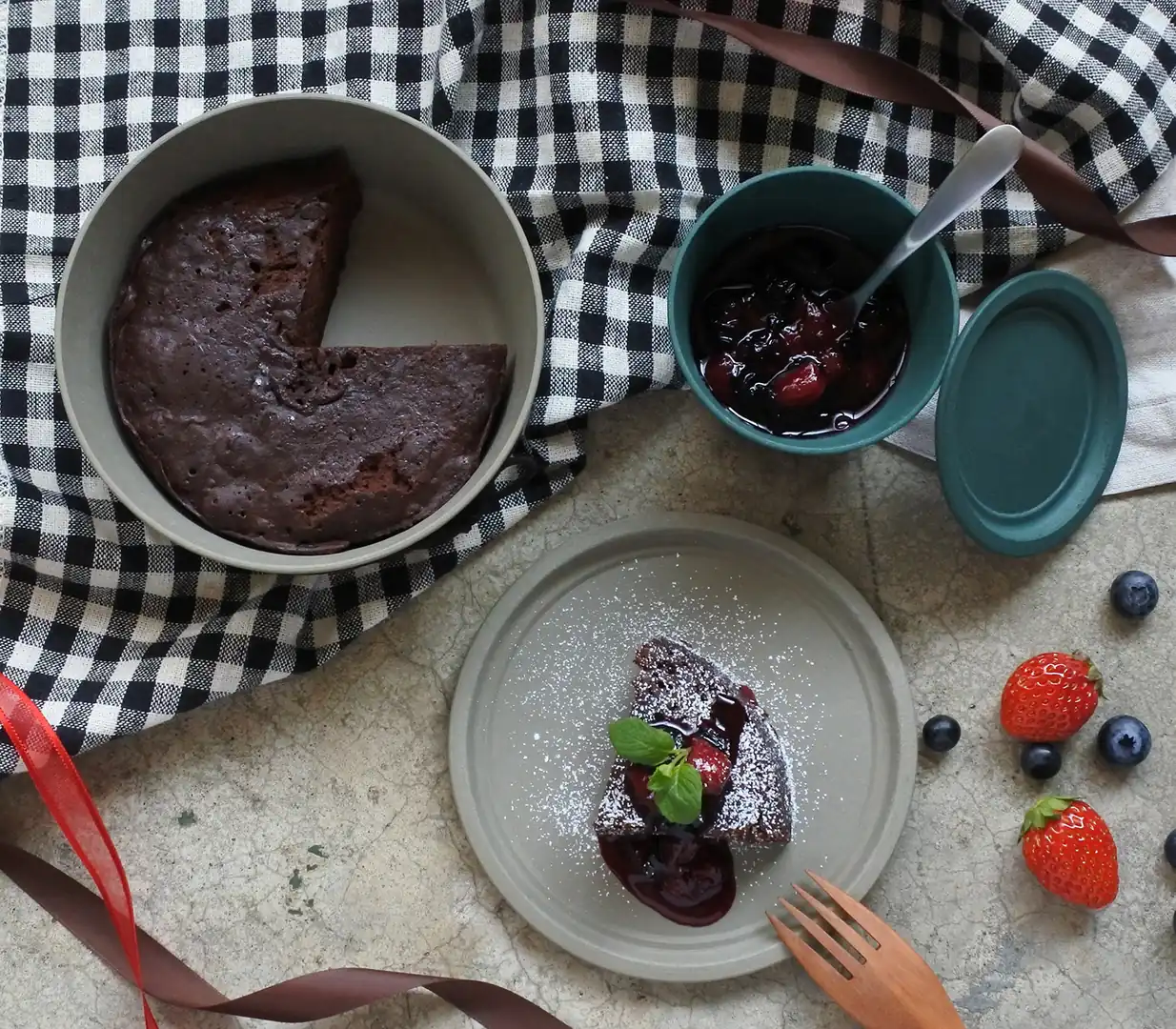
Saito We got excited from an early stage about making something related to food, and decided to make containers. Ours is a product design company, so we added graphic designers to the team, and the project got started.
Whether or not people use a product for a long time is all down to the design
Saito The engineers also have a passion for working with resin. We each wanted to make something which was usable for the lifetime of the resin material. I told them that the feel and color were important for this, and put together a brand concept. We decided from the early stages to make containers that could be used for cooking.
— What kind of plastic do you use?
Saito First, we aimed to decide on the type of resin. Our partners suggested that SPS resin (syndiotactic polystyrene) might be a good choice.
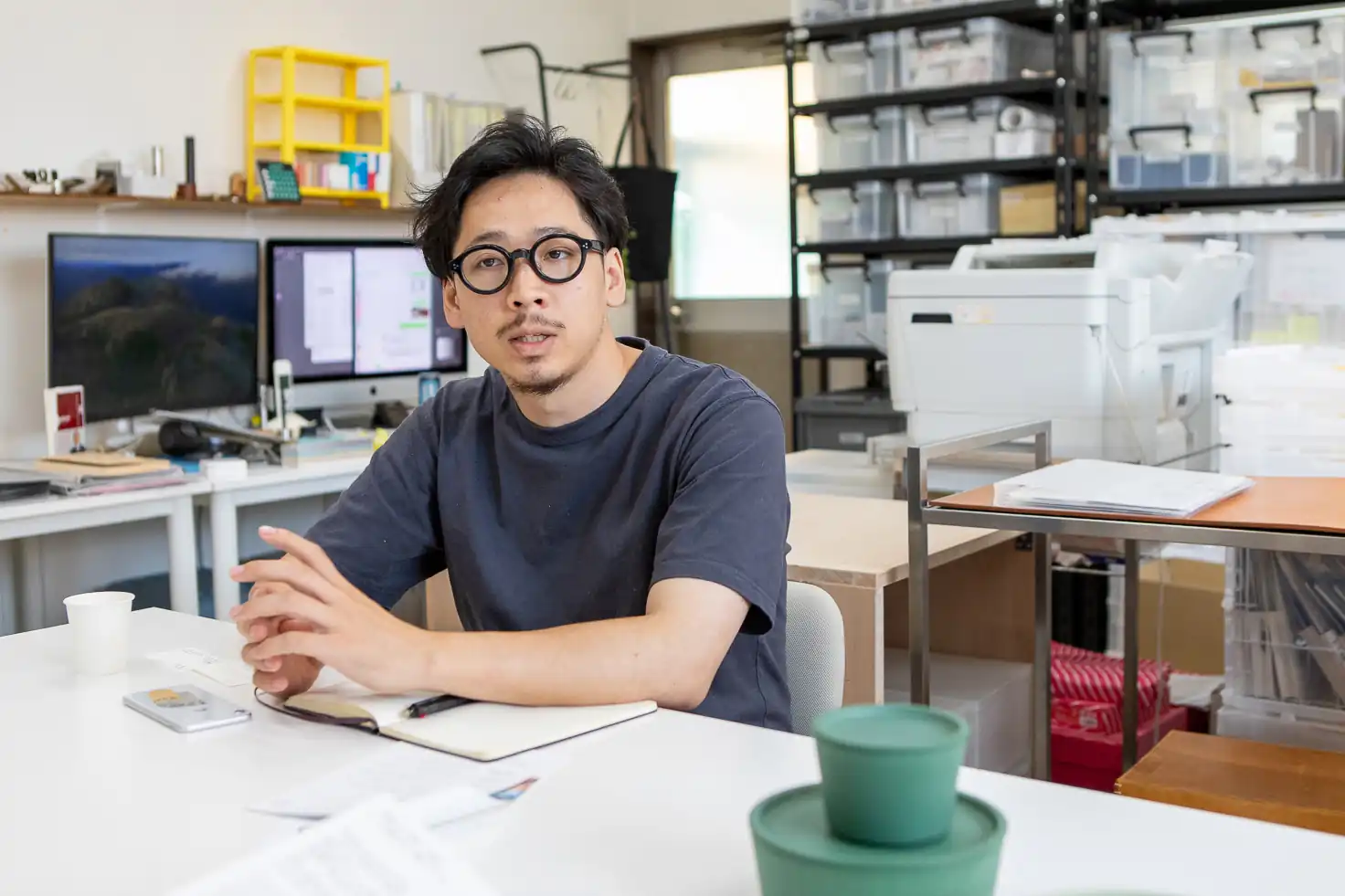
Mikito Ichinohe (Designer, KaB DESIGN) Plastics that are stronger and more heat-resistant than ordinary general-purpose plastics are called engineering plastics and are used for industrial parts or as substitutes for metal or glass. SPS resin is one of these.
It is robust, resistant to acids, alkalis, oils and fats, and can be used for chlorine bleaching agents. It is reinforced with glass fibers and has a heat-resistant temperature of up to 220°C (its melting point is 270°C), making it suitable for everything from cooking processes involving fermentation to high-temperature microwave cooking.
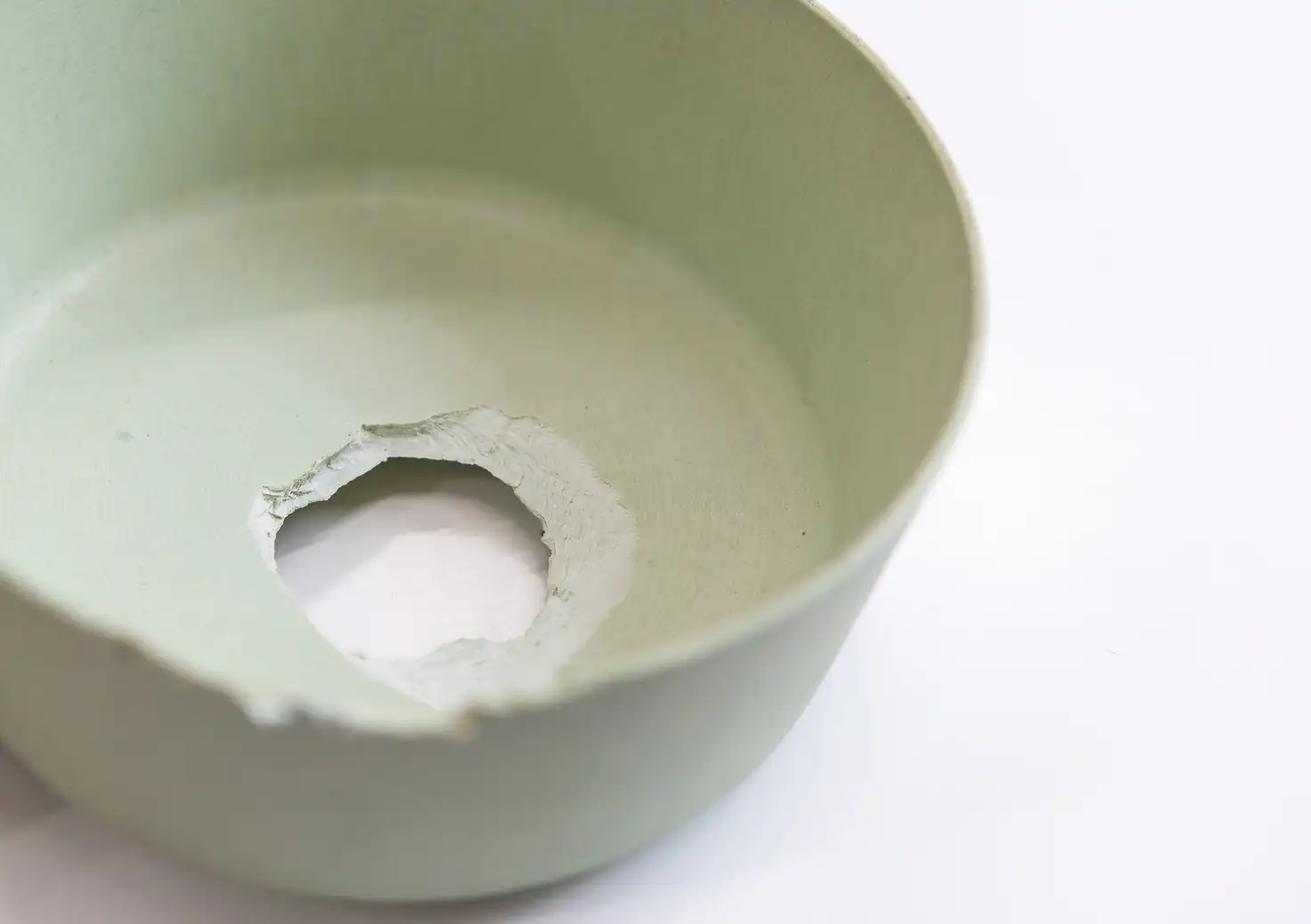
Ichinohe It can be used for both freezing and refrigerating food, as it is cold-resistant down to temperatures of –20°C. It can also go in a dishwasher. Although it is injection molded, it is a difficult resin requiring expertise because it is formed at a higher mold temperature than ordinary resins.
— They already had experience with this difficult-to-use SPS resin at the manufacturing plant, didn’t they, and so they suggested it to you?
Ichinohe That’s right. SPS resin is apparently supplied for chopsticks used at casual dining restaurants. It's tough enough to go through a commercial dishwasher every day, and can be used for a long time. However, it is perhaps not yet a material that we see so much in ordinary household tableware.
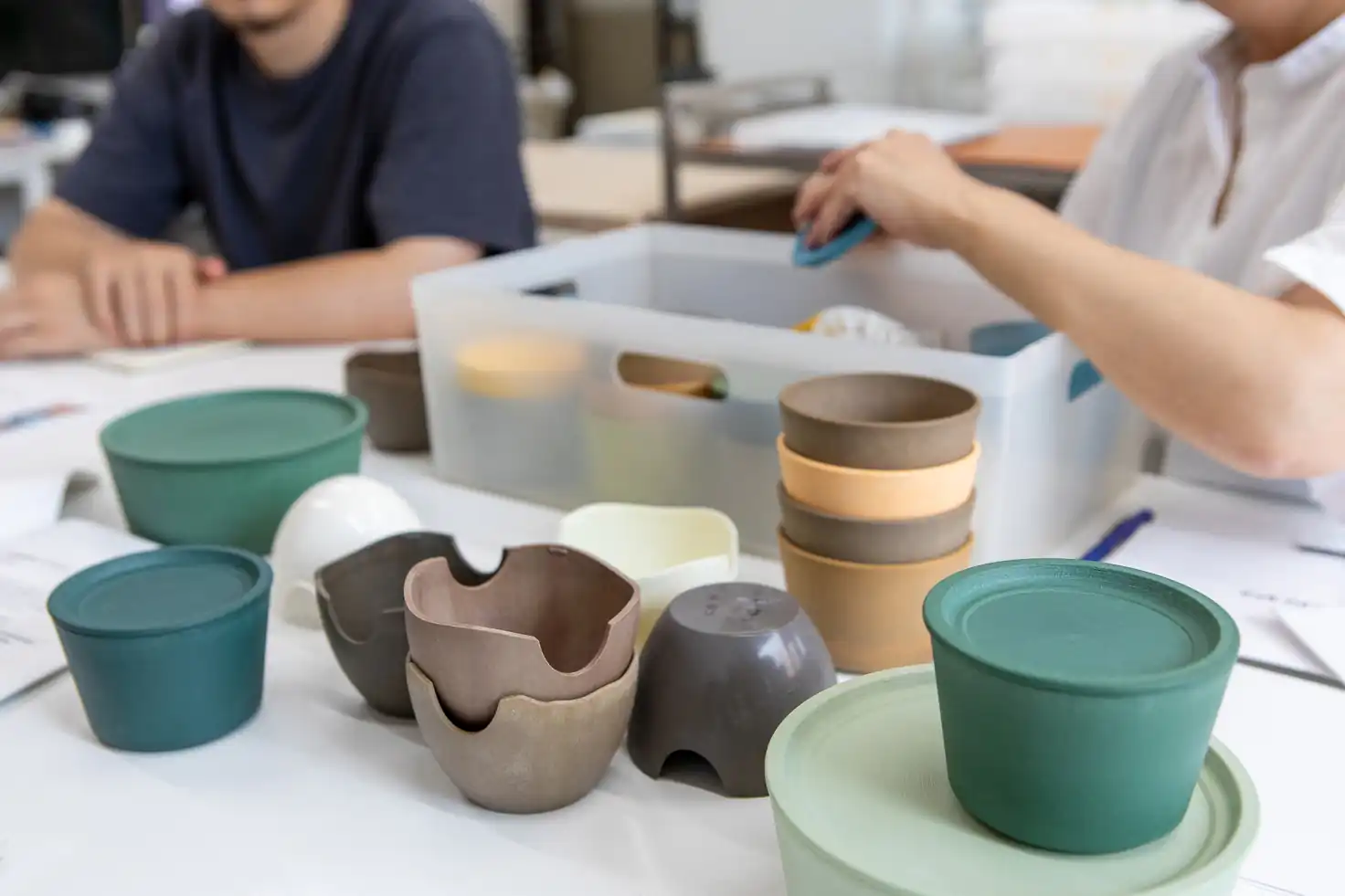
— 9° completely changed our previous impression resin. There are fine lines on the surface, giving it a texture similar to pottery. It feels good in your hands and makes a nice, dry sound when you put it down.
Saito Yes. In addition to the color, shape, and luster, we thought that by changing to give a soft texture, a clunking sound, and a weight that was just right, we could eliminate the conventional impression of resin. The textured surface that is comfortable to the hand is the result of the factory's advanced technology.
Ichinohe Resin has its own inherent merits. First of all, it is light and easy to handle. Plastic, which is hard to break, has always been the preferred choice for tableware in nursing homes or for children; however, it has also been said to make the dining table tasteless.
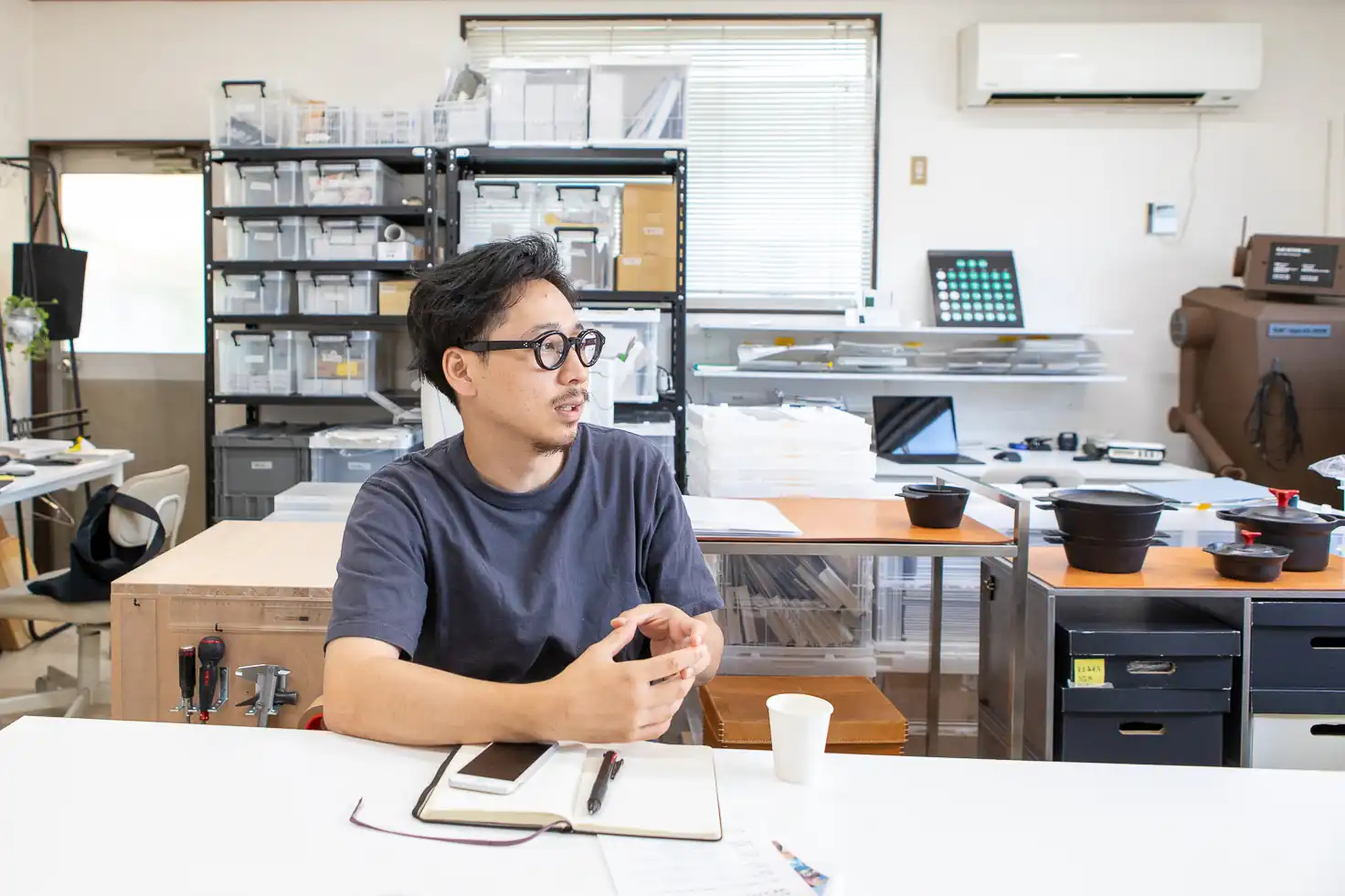
— Plastics are often demonized in modern society, but plastic itself isn't bad.
Ichinohe The fact that straws have become paper is symbolic of this, isn’t it? Plastic is often used for disposable containers because it is easy to create a large volume of items of a given shape. It's even and smooth and tends to give a cheap impression. Unless we change that impression, we cannot broaden the potential of resin.
We can probably say that in the end, whether or not people use plastic items for a long time is down to the design. The word “plastic” itself leads to a preconception that it is cheap, so we intentionally use the word “resin” instead of “plastic” at 9°.
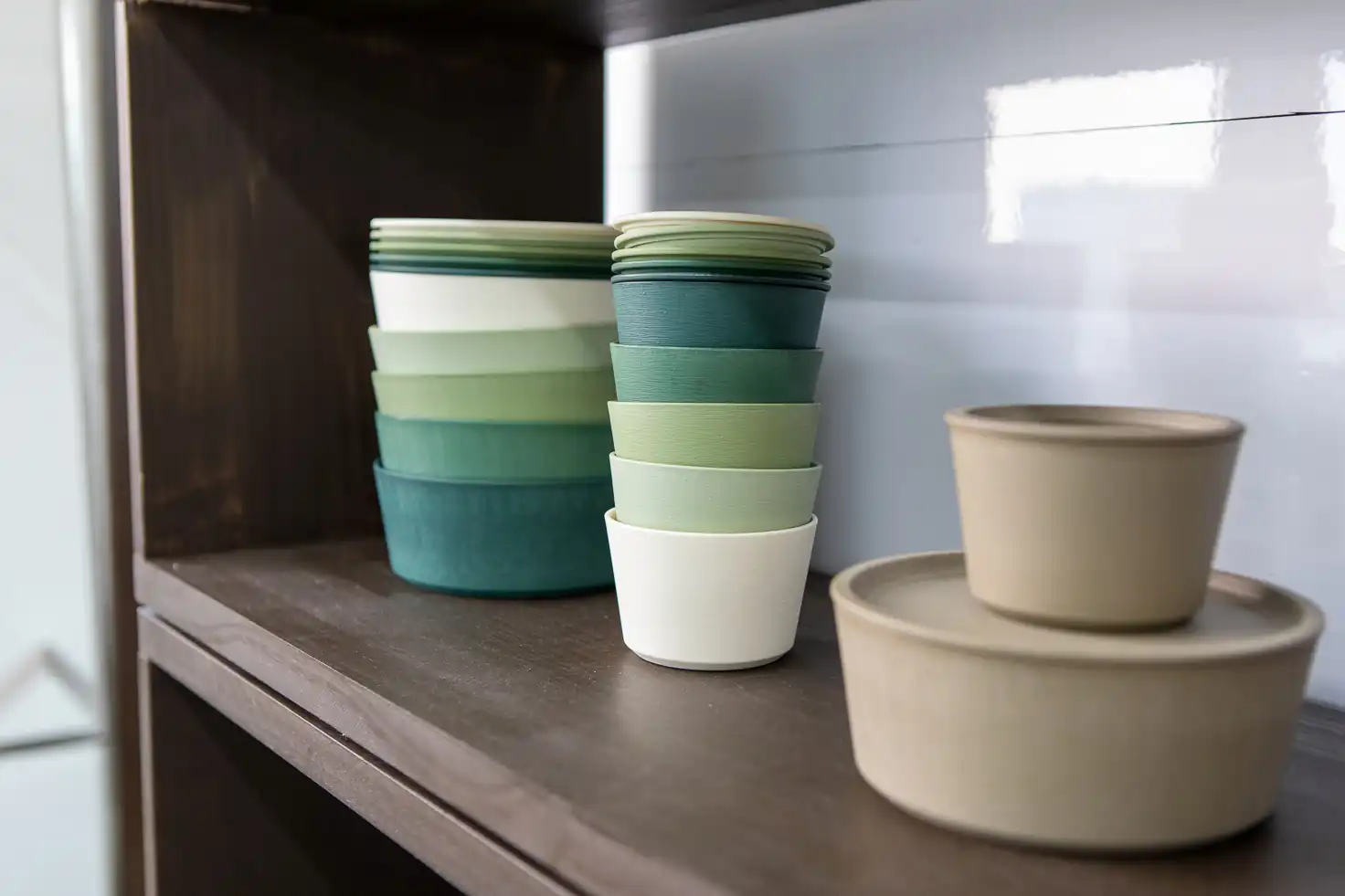
Saito After making several prototypes, we arrived at the current form. At first, we experimented with primary colors, which are common in cookware, but we thought that we needed features and stories that could only be made by us, so we decided to use the nature of Mt. Shirouma in Toyama, the origin of the name Shirouma Science, as a motif.
Three colors are based on the image of butterbur shoots sprouting from the snow-covered mountainside of Mt. Shirouma, and three colors are based on the image of trees growing vigorously from the ground watered by melting snow. When I explained it in this way at an exhibition, everyone was impressed. At that time, I felt that we had not made any mistake with these six nuanced colors.
Ichinohe The reason why the color does not give a uniform impression is down to the surface embossing and toning. When colored and colorless resin pellets melt together, they form a marbled unevenness, and we make use of this. If they mix completely, the color will just end up even, so there is manufacturing expertise required to moderate this process, too.
Which items make you want to use them every day?
— Through gradation, it has a beauty that makes you want to display it.
Saito In the past, I designed a small cast iron pot on the lid of which you could cook a steak. Our goal was to avoid the need for storing heavy cast iron items on a shelf every time by creating a cooking utensil that didn't get in the way or look ugly when left out.
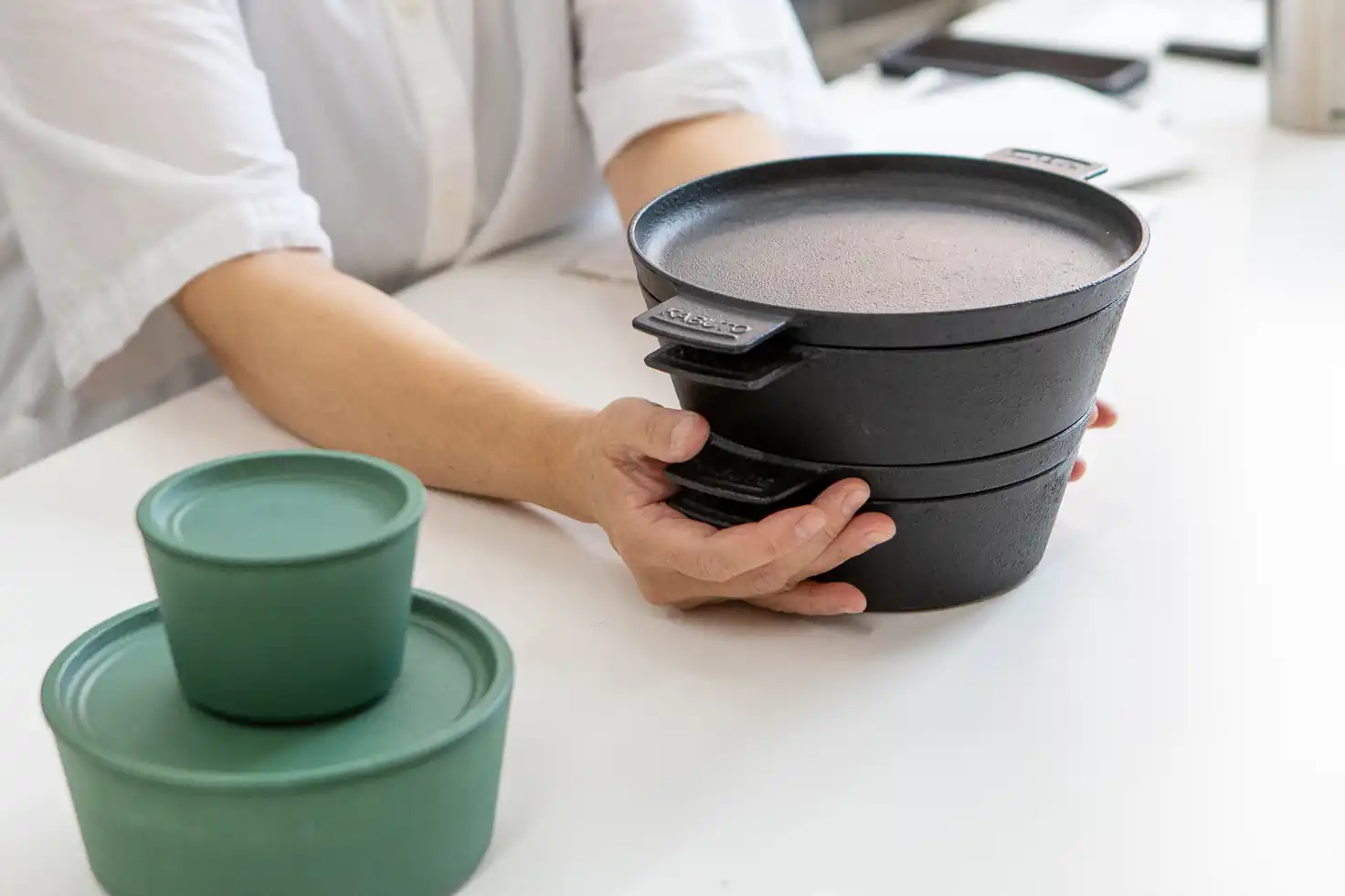
Saito The feeling that I wanted to make something that looked good even if I left it there was at the root of everything, just like that time.
— It’s not just the color – the slightly sloping sides are also effective, aren’t they? Is this angle 9 degrees?
Saito Yes. We adopted the pronunciation Kudo as the product name. San san kudo [the ritual sipping of sake by a bride and groom] uses relatively rigid sake cups, but it encompasses the desire to be loved forever. By setting the slope of the side to a 9 degree angle, you can achieve an exquisitely balanced stacking.
As for the shape, it was designed while thinking deeply about the nature of a design that would be loved for a long time. Isn’t it precisely those simple appearances which seem at first glance to be found everywhere that are timeless? Therefore, we pursued a form that makes no pointless claims and of which you will never get bored.
For this project, I thought a lot about what it was that I wanted to use on my table every day. The main premise was that it was something which could be used easily to cook and as tableware.

Ichinohe Cooking is done in a microwave oven, but SPS resin is distinguished by the way that it does not generate heat easily and so the container itself does not readily get hot even if it is heated for a long time. The microwaves react almost directly to the moisture in the food and heat it up. If the same amount of water is microwaved at 600W for three minutes, the surface temperature of porcelain will be 76°, but that of 9° will remain at 37°. In other words, you can efficiently heat just the ingredients.
The heating time is short, and so the nutrients of the food, such as water-soluble vitamins, can be retained, giving a delicious result.
Saito What I worried about most was the size. After thinking a lot about what to do for the initial lineup, I decided on a size that can be used to from start to finish for meals for a single person living alone. The larger, U150 container can be used as a bowl for rice or noodles, or for a side dish. You can also cook a portion of rice for one person. The smaller, U90 container can be used for both drinks and soups.

Saito In order to use it in microwave ovens, the lid does not seal; instead, we have given it some bumps. I thought of the round bumps which are spread across the lid as functioning to help steam circulate and as a raised base for making the lid into a plate.
There are also bumps too small to see on both sides of the lid’s surface. The bumps on the top are to prevent rattling when the lids are stacked, and those on the underside seal the container completely when the temperature rises.
As it gets hotter, steam moves back and forth, but moisture collects around the bumps, allowing it to seal completely. Normally, steam escapes with a hiss, but here, the lid closes tightly and the moisture stays put.

— So that's why you can cook rice without it boiling over...
Saito You can hold the bowl in your hand when you take it out, too. But what’s inside is piping hot. This point is one of the things which mean that you can cook delicious food without stress.
— That’s just what you’d expect from heat-resistant resin, isn’t it?
Saito I use it every day, too. I use it simply as a bowl, too, or when I’m just drinking milk. People tell us that once they’ve used it once, they use it every day. Cooking utensils which use the same material for the lid and the container itself are rare. But these are made of the same material, so it's easy to handle and stress-free.
Specially-developed recipes
— Is the cooking process different from when you’re using microwave-only cookware?
Ichinohe Yes, it’s different. When you use microwave cookware, you transfer the food to a bowl, but with 9° it is ready to eat as it is. If you’re making gâteau au chocolat, you can melt the chocolate and mix the ingredients, completing all the steps in the container. A distinguishing feature of this container is that you can serve food in it, too, so you need recipes that can be made in one bowl.
Creating the product was not the end: 9° is a brand that we continue to develop. So we invite food stylists who develop recipes to join us and create original recipes, such as “meals for one” and “easy recipes that can be made in 5 minutes,” and share them on social media.
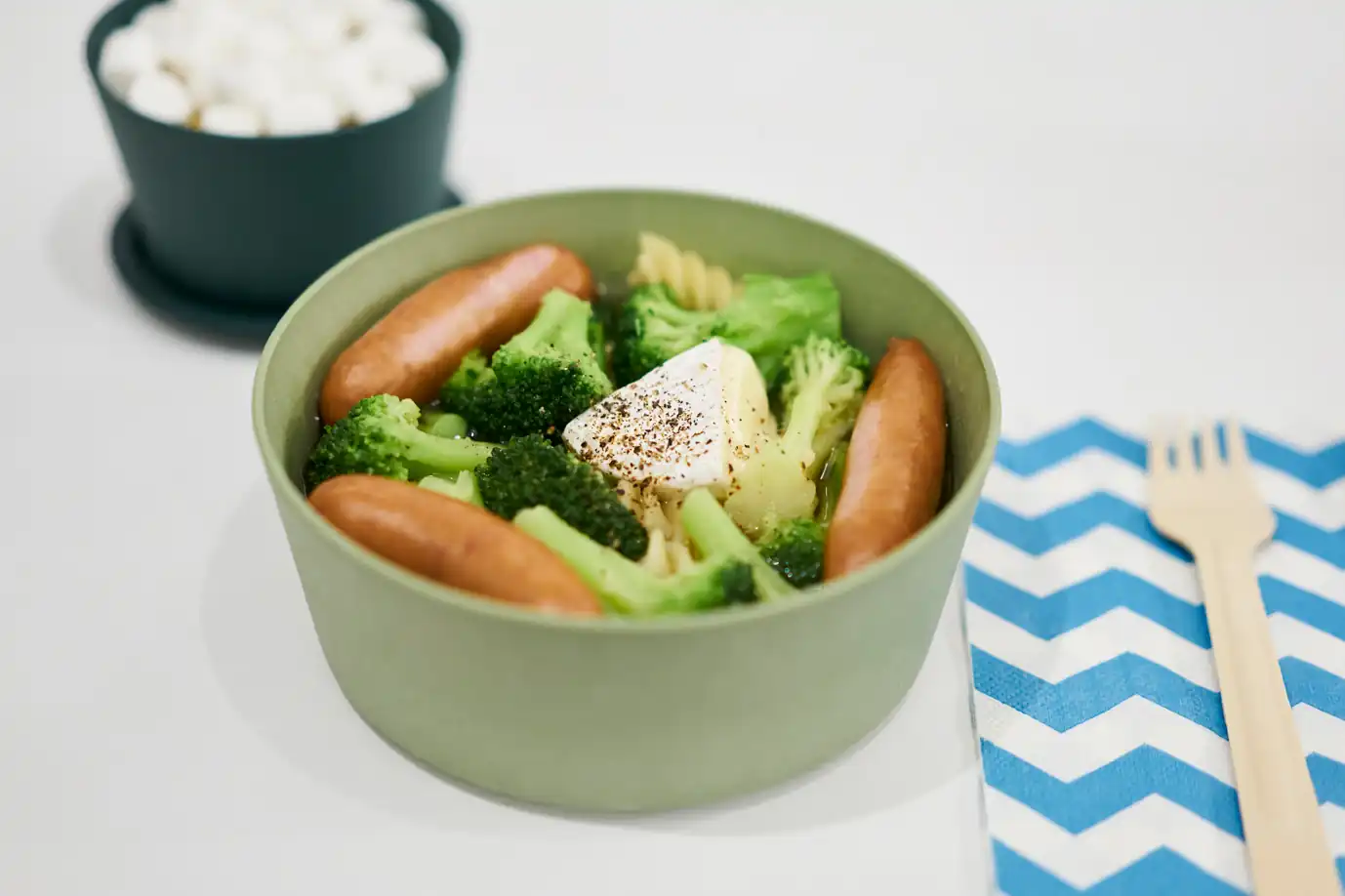
Ichinohe It basically won't break even if you carry it around, so you can use it outside without worries. I once did a series with someone who edits web media in which we left one in the office, bought ingredients that are sold at convenience stores, and made lunch in the office.
— Once you start using it, it looks like you won’t be able to part with it...
Ichinohe You can use it in many situations. Both the body and the lid can be used as regular plates, or you can store food in the refrigerator in it. You can also use it to defrost frozen food. There was even a customer who bought several to replace all the storage containers they were using.
If you don't become the “original,” you lose
— What was the most challenging aspect of development?
Saito The development itself was fun and went smoothly, but after the product was completed was the hard part. Our sales plan fell through. Right after the product was completed and put in an exhibition, we were told by our client's factory that the company would no longer engage in B2C business. All of a sudden there was no one to sell them to, and the stock was piling up in the warehouse.
— Your client's factory was primarily a B2B operation, and this brand was created as a challenge, but you couldn't sell it any more. The sales plan was scrapped just when the finished product was in front of you, wasn’t it?
Saito They ended up lying there in their packages for one or two years. Many twists and turns followed, and we resolved that if there was no one else to sell it, we, the people in charge of designing it, would have to sell it ourselves. That's why we entered the GOOD DESIGN AWARD as sales promotion.
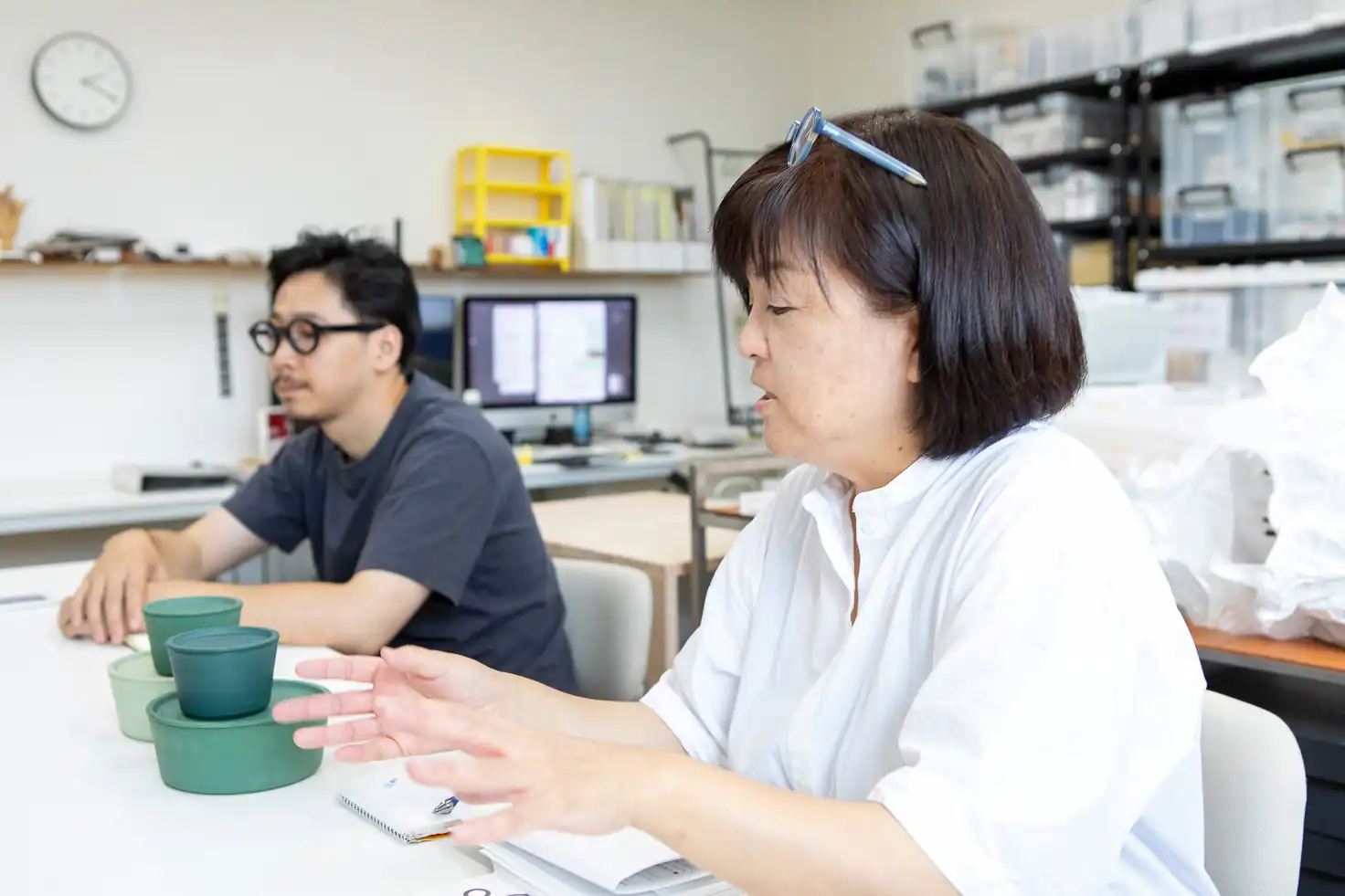
- Your entry came from such a cliffhanger situation... However, it was selected as one of the GOOD DESIGN BEST 100 for 2018.
Saito We are late into the game as a manufacturer of containers and cooking utensils, and we are a small company with only a few people, so if we get caught up in competition over prices, that will be the end for us. When I thought about selling our product going forward, I thought that if 9° won the GOOD DESIGN AWARD, we would become the “original.” I thought that without becoming this original, we would lose once similar products emerged, so that’s why I entered.
Products for daily use are soon imitated. As a designer, I'd seen the harshness of this up close. That's why we went about development with the idea in mind that the product itself had to be strong enough to become the original.
— How did you go about your entry?
Saito If you look at the list of companies that have won awards so far, you can see many distinguished manufacturers. I thought it was almost unheard-of for a tiny company like ours to develop products that they could enter as their own brand.
Therefore, I thought of this entry as a valuable experience for KaB DESIGN, so I asked Mr. Ichinohe, who joined the company as a new graduate, to be in charge of the presentation. I never thought that we would be commended as one of the BEST 100.
— Have there been any changes among buyers since you won the award?
Saito Yes, they’ve changed, they’ve changed.
Ichinohe It became a popular item at exhibitions, didn’t it? That led to more business and to recognition. Receiving the BEST 100 award was really big.

Saito I believe that the 9° brand is now entering a new stage of growth. Up until now, we have been working in close tandem with chefs to develop recipes unique to Kudo and post them on social media. I feel that more people appreciate us each year.
9° has potential. People who like 9° become really devoted fans. We are surprised by how highly they value this brand. We’re encouraged by that enthusiasm.
Even when a good thing is born, there is a big barrier in the way of transmitting it to the world. The GOOD DESIGN AWARD was an opportunity for 9° to take a step forward as a brand. In Part Two, we will look at the creativity of KaB DESIGN to see why such a design was born.
kudo
KaB DESIGN INC.
These heat-resistant resin containers can be refrigerated and frozen, cooked in a microwave oven or steamer, and used in a dishwasher. In order to increase the value of plastic, which has become a disposable material despite its long service life, a product that can be used with love is realised. Designers and engineers started by working together to develop a unique new material. Currently, the designers are responsible for sales promotion and are building a new business model that provides experiential value through 9°.
- Award details
- 2018 GOOD DESIGN BEST 100 https://www.g-mark.org/en/gallery/winners/9dee09ca-803d-11ed-af7e-0242ac130002
- Director
- Yshiko Saito, Brand director
- Designer
- Yoshiko SAITO (Product design) + Masatoshi OHTAKE (Visual design)
Tomoko Ishiguro
Editor/writer
After working in the editorial department of “AXIS,” she became a freelancer. She writes, edits, and plans, with a focus on design and life culture. Her major editorial works include LIXIL BOOKLET series (book, LIXIL Publishing) and “Oishisa no Kagaku” (magazine, NTS Publishing).
Chieko Shiraishi
Photographer
She started photography after taking a black and white enlarger lesson organized by a town. After working as an assistant photographer, she is mainly active in taking photos for magazines, etc., while creating works in a darkroom.
Related Articles

Aiming at a toy that inspires everyone (Part 1)
This time we visited A4/A-Yon (OFFICE CAMP LLC), which makes “tumi-isi,” hand-processed and hand-painted building blocks, in Higashiyoshino Village, Nara Prefecture. The unique building blocks each have a different shape and can be enjoyed by children and adults alike. The product was selected as one of the GOOD DESIGN BEST 100 in 2021. Mr. Daimon Kanno, product designer, started production of the blocks in earnest in 2016, eight years after the first release. Why did it take so long? How has he faced and overcome the challenges? He spoke on these questions from a creator’s perspective.

Aiming at a toy that inspires everyone (Part 2)
This time we visited A4/A-Yon (OFFICE CAMP LLC), which makes “tumi-isi,” hand-processed and hand-painted building blocks, in Higashiyoshino Village, Nara Prefecture. The unique building blocks each have a different shape and can be enjoyed by children and adults alike. The product was selected as one of the GOOD DESIGN BEST 100 in 2021. Mr. Daimon Kanno, product designer, started production of the blocks in earnest in 2016, eight years after the first release. Why did it take so long? How has he faced and overcome the challenges? He spoke on these questions from a creator’s perspective.

To foresee the next steps, branding is crucial (Part 1)
In “GOOD DESIGN TANBOU(=exploring),” we take a look at the first small steps of good design through on-site interviews. Our first destination is Tsuboe Co., Ltd. in Tsubame City, Niigata, which won the GOOD DESIGN AWARD for two consecutive years for their graters. They revealed the history of the creation of their unique graters, and how design came to be integrated with everyday items.
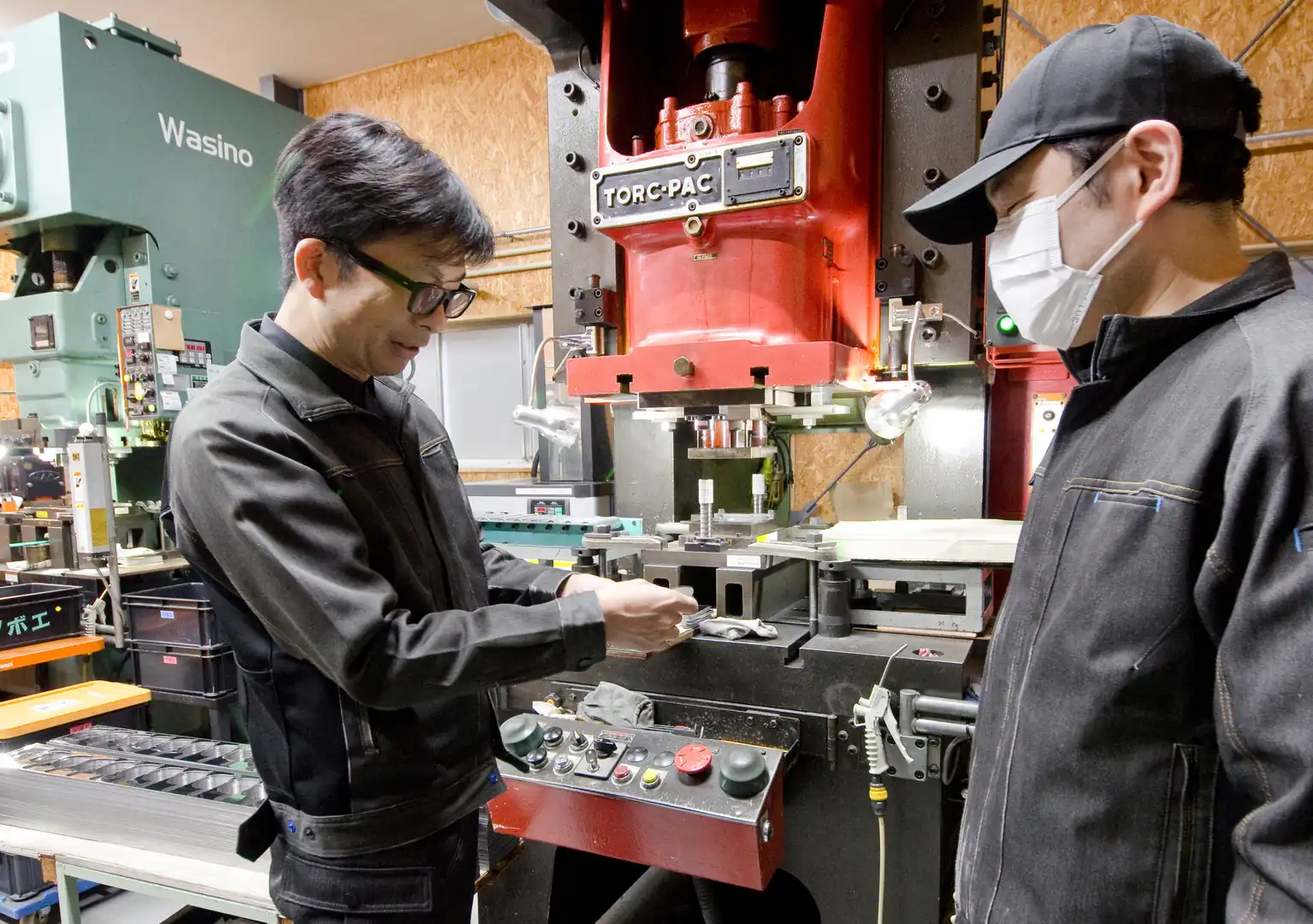
Birth of a brand from a small local factory! (Part 2)
In “GOOD DESIGN TANBOU(=exploring),” we take a look at the first small steps of good design through on-site interviews. Our first destination is Tsuboe Co., Ltd. in Tsubame City, Niigata, which won the GOOD DESIGN AWARD for two consecutive years for their graters. They revealed the history of the creation of their unique graters, and how design came to be integrated with everyday items.


